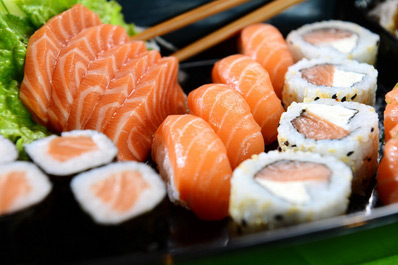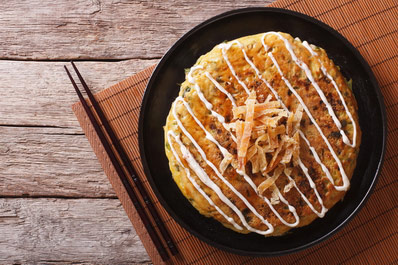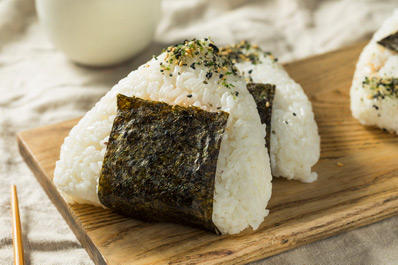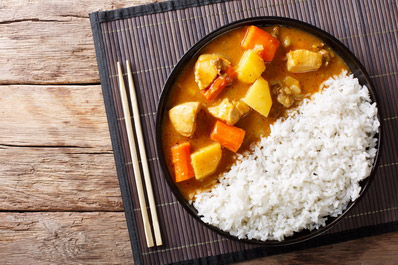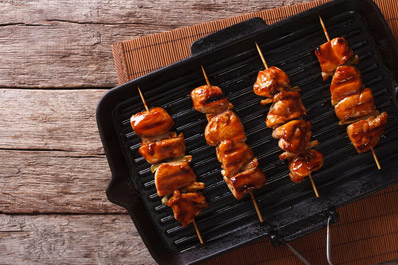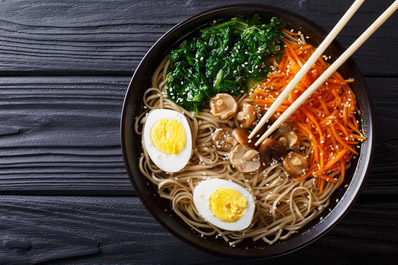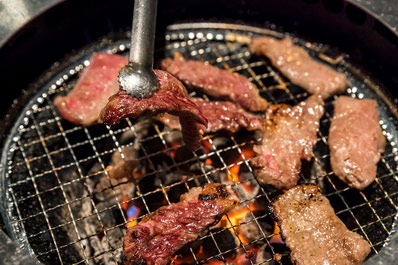Japan Travel Guide
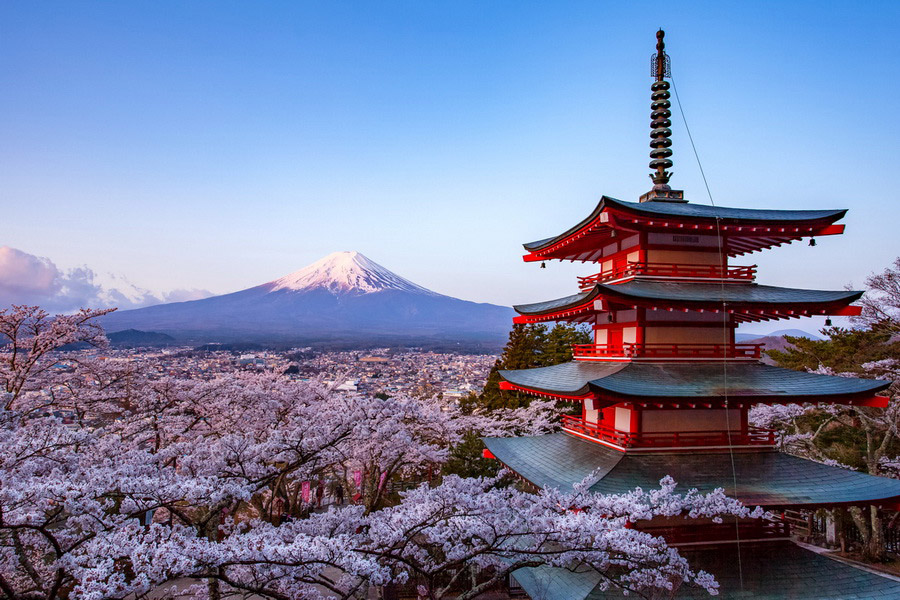 Mount Fuji, Japan
Mount Fuji, Japan
A famous American filmmaker, Roman Coppola, once said about Japan:
"Japan is the most intoxicating place for me. The Japanese culture fascinates me: the food, the dress, the manners, and the traditions. It's the travel experience that moved me the most."
Thousands of tourists express the same sentiments after visiting Japan for the first time. So, what is unique about Japan? What is in this Land of the Rising Sun that attracts people from all over the world?
Discover what makes Japan a unique destination by continuing to read our Japan travel guide. Here, you'll find practical information to help you prepare for your trip to this stunning country.
Your Travel Guide to Japan
Contents
Japan's Location and Its Influence on the Country
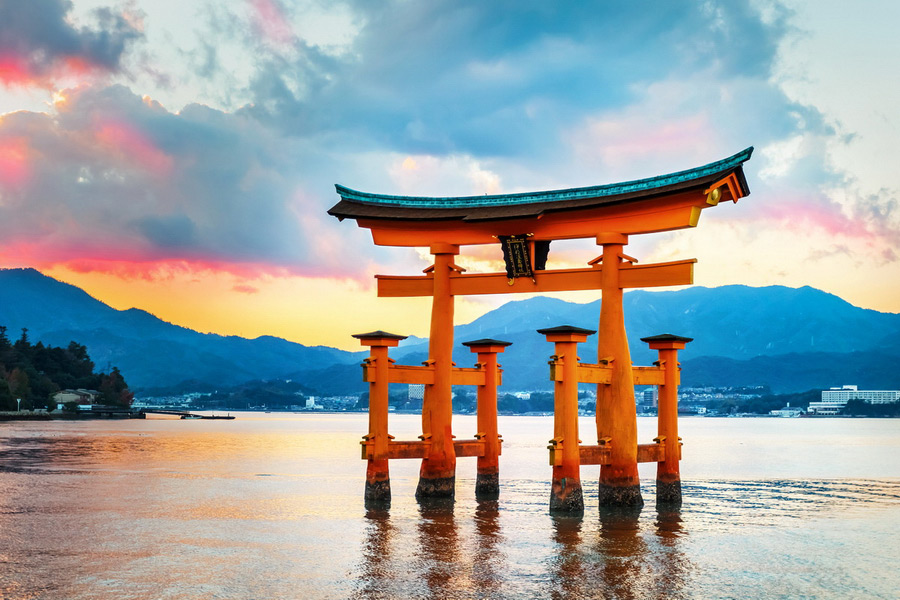
It's always interesting how geography shapes the country's distinct culture and traditions. And Japan is no exception. Let's look at a few of them.
Japan's Culture and Geography
Sitting on a chain of around 3,000 islands, this archipelago country comprising four main islands (Hokkaido, Honshu, Shikoku, and Kyushu) is far from the mainlands of Asia and Europe, which has historically made it difficult for other nations to connect with the country. It's no wonder that today, when tourists get acquainted with its traditions and habits, they describe their experiences with one voice: "It seemed like visiting another planet, but a nice one."
Japan was in isolation for many centuries. The first recorded Europeans to set foot in Japan were two Portuguese traders in 1543 - Japan's first contact with Europe!
Isolation as Cultural Preservation
The sea surrounding Japan was a natural defense against continental invaders like Mongols. The period of isolation between the 17th and 19th centuries in response to foreign influences, known as the Sakoku period under the Tokugawa Shogunate, has also left an imprint on its culture. Although international trade and commerce prospered, interactions between natives and outside foreigners were strictly forbidden.
Even during the Meiji Restoration and Modernization (1868-1889) era, exercised by the ruling oligarchs who overthrew the Shogunate (Samurai class), abolished the class systems (feudalism) and adopted modernization and industrialization, the nation's core natural structure wasn't affected. Japan is one of the few countries that has never been colonized. Its language, customs, and art for many centuries remained intact. All these factors made Japanese culture very unique.
And What About How the Japanese Greet Each Other?
Indeed, one of the first things that catches tourists' eyes in Japan is bowing.
The Japanese people bow when they greet each other. In addition, they bow when apologizing and even before and after meals. However, Japan is not the only country where people bow. Bowing is also popular in China but not as frequent as in Japan.
So, did Japan's geography somehow influence the culture of bowing? Not in this case. The custom of bowing was introduced to Japan from China between the 5th and 8th centuries when Buddhism spread. By exposing a neck, this gesture initially showed that a person had no evil intention of attacking or hostility.
Unique Japanese Food
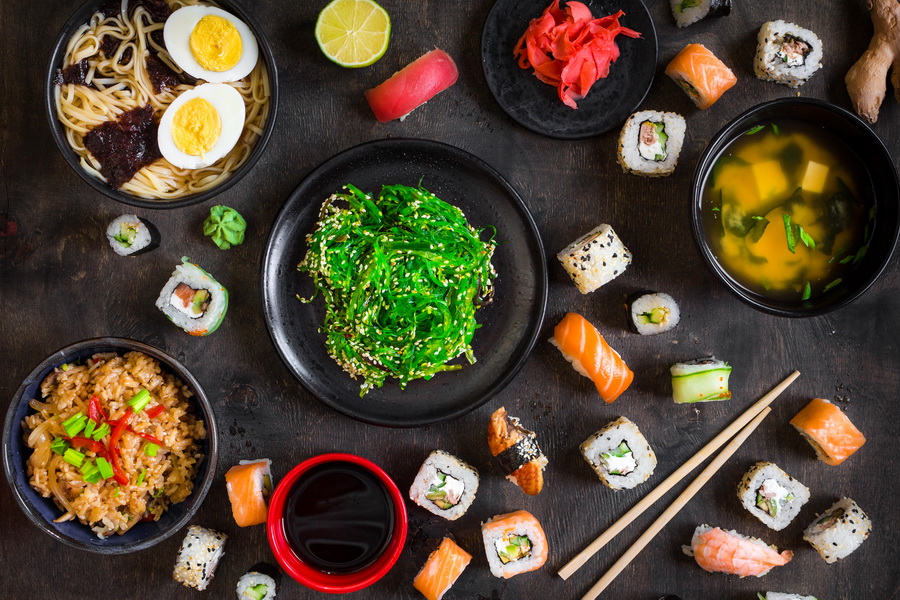
Japan's geography defined its traditional cuisine. Japan has historically faced challenges in agriculture due to its mountainous terrain. Therefore, they used to rely on the sea in their daily life, with rice being a staple crop. For example, traditional Japanese food contains rice served with miso soup and other foods.
Seasonal ingredients are increasingly common. Side dishes typically include fish and pickled vegetables cooked in broth. As mentioned, seafood is widespread in Japan, often baked or grilled and served raw as sushi.
Big on Utilizing Small Spaces
If there are people on earth who learned to make the best use of small spaces, these are the Japanese. The mountainous terrain and little flat land always required a careful use of space. It's no surprise that the Japanese learned to design modular houses and traditional Japanese gardens in such a way that they look more spacious.
Love for Nature
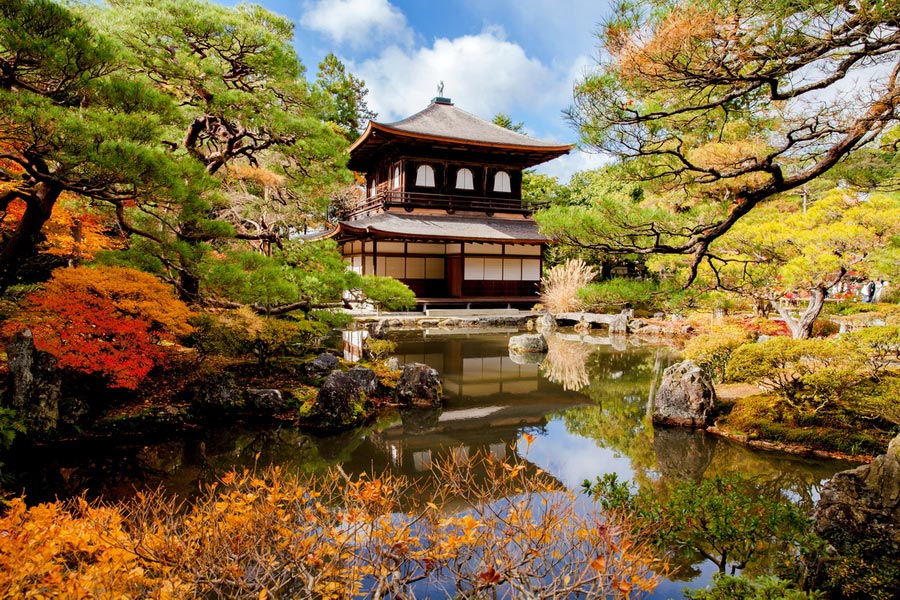
Japan's distinct location and predisposition to earthquakes led to a culture that appreciates natural beauty and its ability to coexist with the natural environment. Given that forests cover almost 70% of Japan's total area, wood has been a crucial resource for the Japanese. Trees inspired local poets long ago, bringing about Japanese poetry known as waka and haiku. The Japanese have always loved plums and enjoyed cherry blossoms (Sakura). Visiting Japan during the Sakura period, April to May, can be one of the unforgettable experiences.
Your Dream Vacation
Everybody has a place they dream of visiting once in their lifetime, and for many, Japan is that destination. Think of Tokyo, a bustling city that melds history with futuristic technology. If you're looking to immerse yourself in stunning natural landscapes, you can visit the Japanese Alps or hike the famous Mt. Fuji. Japan is full of Buddhist temples and Shinto shrines, surrounded by well-landscaped parks featuring waterfalls, lots of greenery, walking paths with great views, and outdoor activities for children. Besides, the country boasts an unusual culture, exquisite cuisine, and traditional architecture. Anime and manga fans can explore the worlds of their favorite animation heroes at the Ghibli Museum in Tokyo. Japan even has breathtaking beaches and ski resorts that will amaze and enthrall every visitor. Your dream vacation awaits. With attractions and activities for every taste, start planning your journey to the Land of the Rising Sun to immerse yourself in its rich traditions and culture.
Top Historical Experiences:
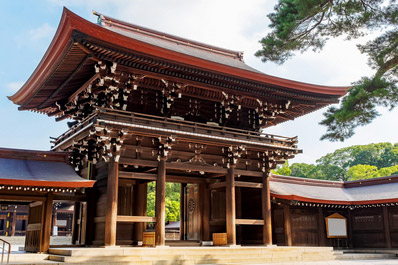
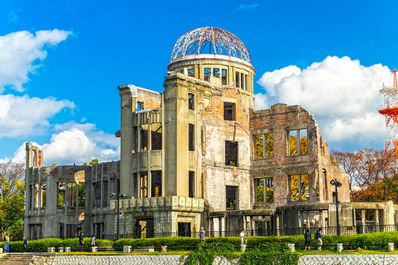
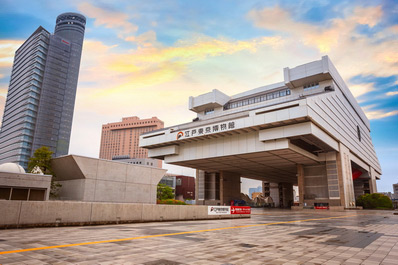
Top Cultural Experiences:
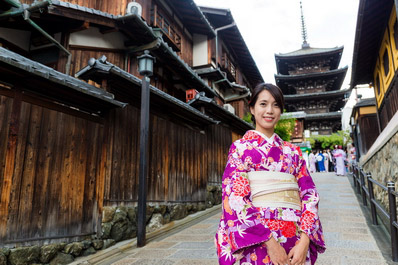
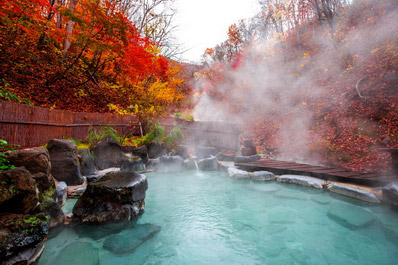
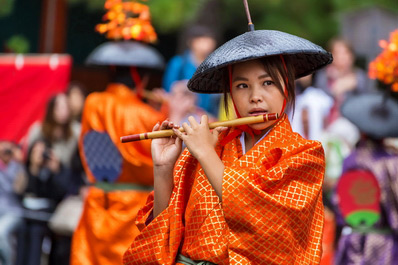
Top Outdoor Experiences:
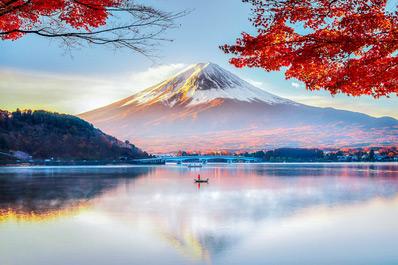
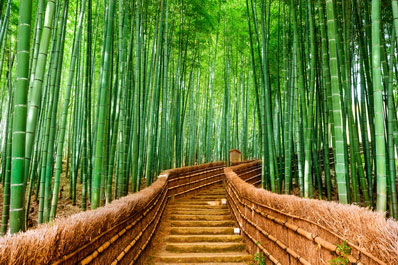
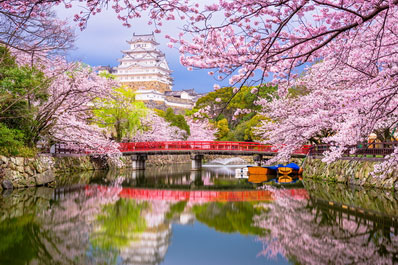
Japan's Climate
Since Japan is an archipelago country, its climate is mild, making it an ideal destination for all four seasons. The climate fluctuates between subarctic in the north and subtropical in the south. The Pacific region and the region of the Sea of Japan have different weather conditions.
Northern Japan features warm summers and cold winters with heavy snow in mountainous areas and the Sea of Japan regions.
Summer in Eastern Japan is typically hot and humid; winter is snowy and cold on the Sea of Japan side and in the mountains.
Western Japan has hot and humid summers with temperatures reaching 95°F and upper. Winters are moderately cold.
Okinawa and Amami have a pleasant subtropical oceanic climate with mild winters. Although summers are hot and humid, the temperatures never rise above 95°F.
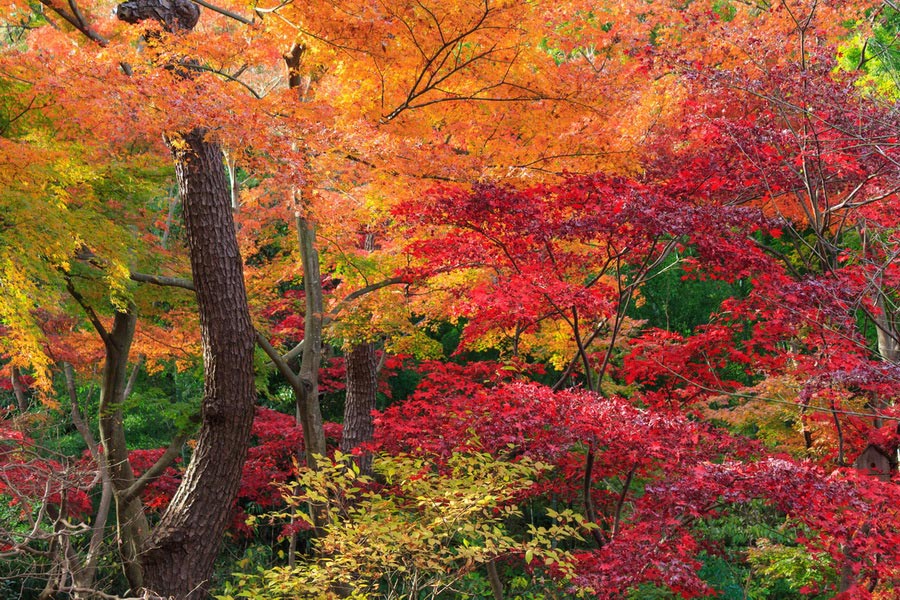
Best Time to Visit Japan
The best seasons to visit Japan are spring and autumn, typically March – April and September – November. Here's the breakdown of the recommended time according to the Japanese main cities.
The recommended time to travel to Tokyo

Tourists can visit Tokyo any time during the year. Yet the recommended seasons are spring and autumn.
The cherry trees usually start blossoming at the end of March/beginning of April. Therefore, this is the popular period for spending holidays in the city. The summer season is less recommended because of the hot and rainy weather. Besides, Tokyo has a very booming tourist activity during this time, which increases housing and food prices. However, if the heat doesn't bother you, a small fan and wet towel will be enough to ensure a pleasant trip to Tokyo.
January is the coldest month in Tokyo, but the weather is not freezing. The temperatures fluctuate between 34°F and 54°F, rarely falling below zero. On the other hand, those ready to handle the cold weather will find two advantages when visiting Tokyo in January – low prices and tourist-free sightseeing spots.
The best time for the Sakura period
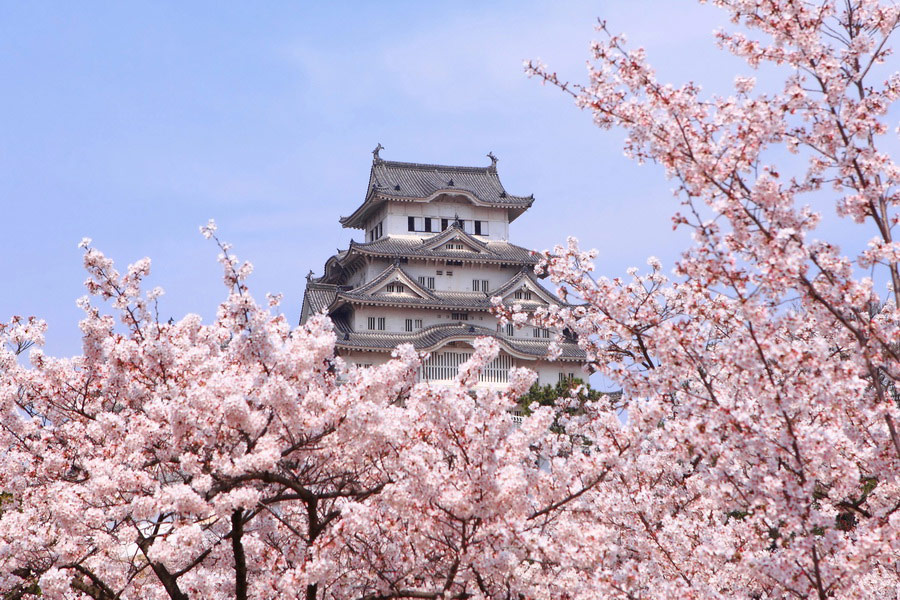
The cherry blossoming period in Japan is one of the bulks of Japanese life. As one of the vivid Japanese symbols, it stands for renewal and hope. One of the questions often asked is when the cherry blossoming period in Japan is. The answer is: most cherry flowers blossom between the end of March and the beginning of April.
Please note that the Sakura period is subject to weather conditions, which can slightly affect the blooming period from year to year.
The best time for skiing
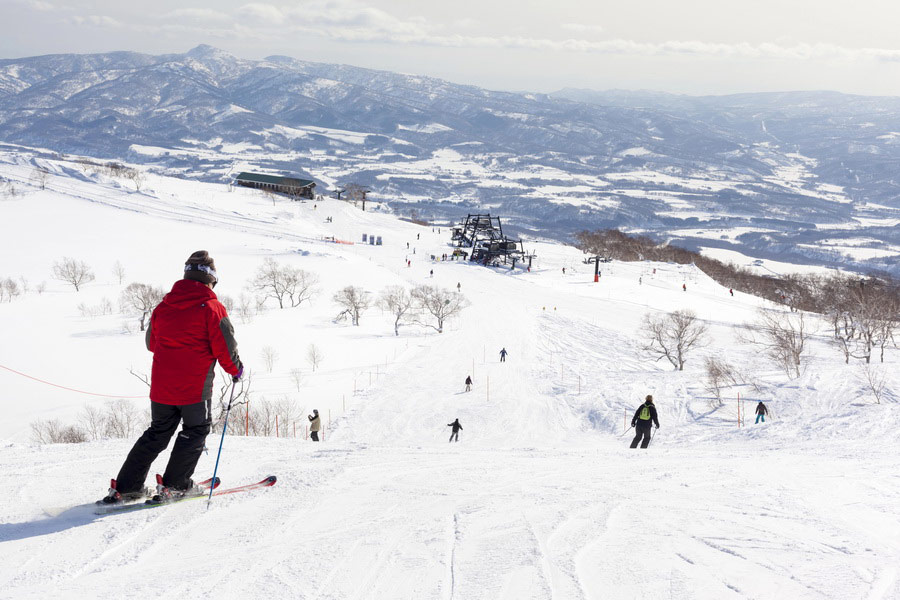
Japan has over 500 ski resorts, big and small ones. If you plan a trip to Japan in the winter, make sure to have a skiing adventure.
The peak of the ski period falls between Christmas and New Year, with ski spots full of domestic and foreign tourists. Similarly, the peak or powder season lasts from early January to mid-February. During these phases, prices are more expensive than on other dates.
The peak season ends in late February and early March. Furthermore, the ski peak-off season in spring until early April can be the best option for those looking for affordable options. Prices for food and entertainment in resorts come down significantly.
One important thing to remember is the Chinese New Year, the busiest and most expensive period.
Luxury ski destinations in Japan: Hokkaido, Niseko, Furano, Sahoro
Inexpensive ski resorts: Camore Ski Village, Sun Alpina Sanosaka, Akagiyama, Makino Kogen, Miinohara
The recommended time to explore Mount Fuji
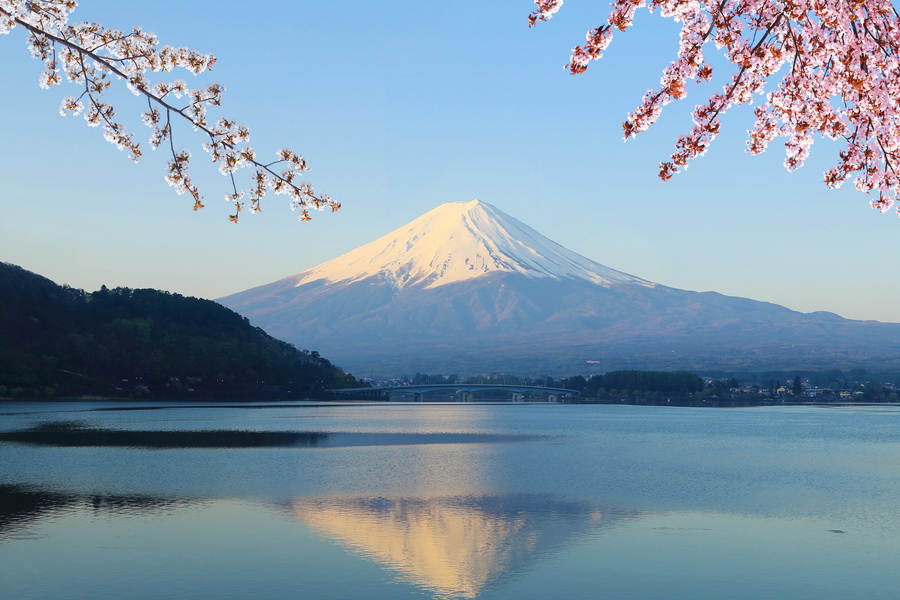
Mount Fuji is another recognizable symbol of Japan, the highest mountain in the country. For most travelers, it is a must-destination with stunning landscapes. The density of clouds and visibility are important factors to consider before planning a trip. The mount is the most visible in winter. The most cloudless month of the year in Fujinomiya, from the closest town to Mount Fuji, is December, during which the sky is 75% clear.
Choose Your Transport
Flights in Japan
Traveling between Japanese regions/prefectures by air is simple.
Did you know:
- There are 98 airports in Japan.
- In addition to popular Japan Airlines (JAL) and Nippon Airways, dozens of regional airlines can fly you to and from cities.
Car & RV travel
Japanese love the open road. Traveling by motorbike, car, truck or RV is a great way to explore the country’s beauty.
- If you are planning to drive in Japan, be sure to obtain an International Driving Permit (IDP) and keep it and your national license with you at all times.
- Car rental companies are found at Narita Airport and most cities, including Nissan Rent-A-Car, Times Car Rental, Nippon Rental, NICONICO Rental, Toyota, Budget, and Hertz, among others.
- For RV travel, visit Japan RV Rental.
Train Travel in Japan
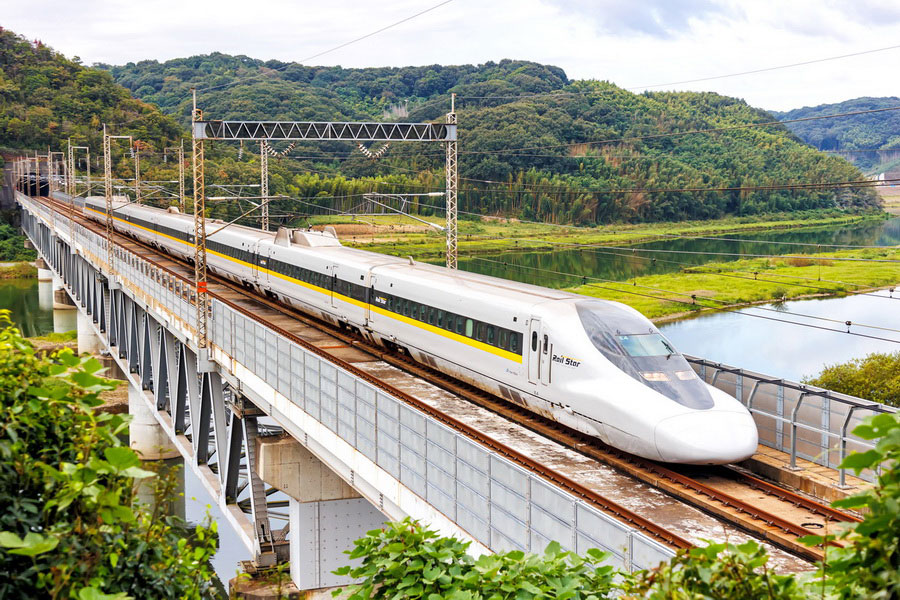
Travel across Japan from the elegance of a train coach.
- The train is a primary mode of transportation for the Japanese.
- From the special service in the Shinkansen train with Hello Kitty design to the heavenly views of Mount Yatsugatake on the HIGH RAIL 1375, to a luxury ride on the Twilight Express Mizukaze or the Royal Express, comfort, scenic beauty, and culture are alive and well in Japan.
- The Japan Rail Pass is a cost-effective transportation ticket offering unlimited travel on most trains operated by the Japan Railways Group, including shinkansen (bullet trains), for foreign tourists visiting Japan.
Long-Distance Bus Travel in Japan
An affordable and comfortable way to get from city to city, Japan’s system of highway bus routes covers the entire country.
Get on board
- Willer Express is the largest provider of inter-city bus services in Japan. Japan Railway also runs a large fleet of buses. Depending on where you want to go, JR can be the only available option.
- Willer offers bus passes for 3, 5, or 7 days, which can be used for two months.
Visa Requirements to Visit Japan
The visa requirements for visiting Japan vary depending on your nationality. Citizens of some countries, such as the United States, Canada, Argentina, and most European countries, are eligible to enter Japan for up to 90 days without a visa for tourism or business. However, citizens of other countries must apply for a visa in advance.
Where to Stay in Japan
Accommodation options in Japan are diverse, from traditional Japanese rooms to European-style hotels and much more. You can sometimes find places for overnight for as little as 1500-3000 yen ($10-$20) per person in a hostel or dorm, but, more reasonably, a regular clean twin room will set you back upwards of 7,000-11,840 yen ($48-$80). A good and comfortable ryokan is more expensive – but 19,240-22,198 yen ($130-$150) per person will get you better accommodation than you’d expect for the same price in the US or Europe. As often happens, single travelers usually pay the cost of a double room. No matter where you stay, in the highest tourist spot or a bit far from downtown, you will be expected to book a room in advance.
How Many Days Do You Need in Japan
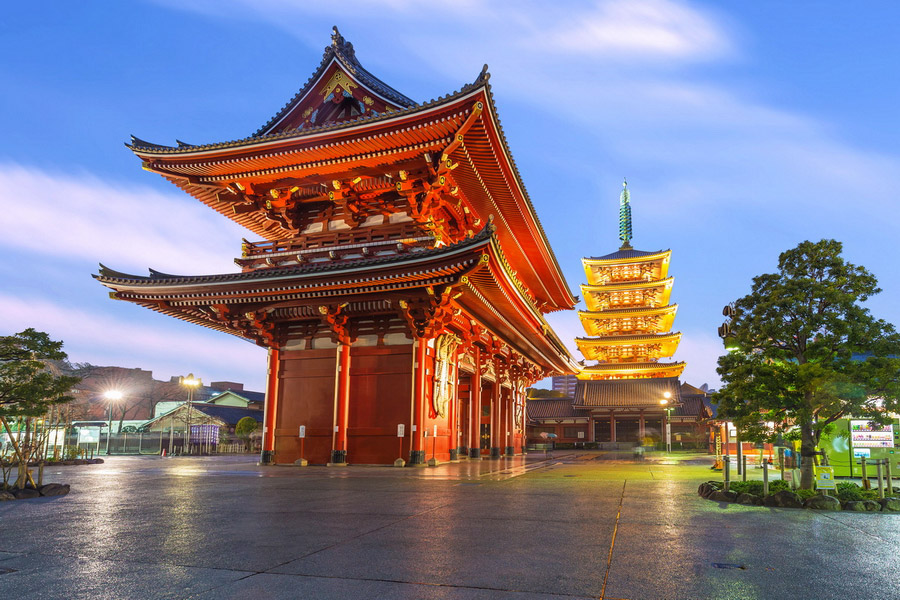
A minimum of two weeks is perfect for visiting major landmarks of Japan. However, the ideal length of your trip to Japan will depend on what you want to see and your budget.
Here are a few examples to give you an idea of what can be included in your Japan travel packages on a 3-4-day tour, 6-7-day travel package, or 14-day trip.
Tours for first-time travelers- Tokyo – Japan's capital, offers a fascinating insight into the ultra-modern lifestyle of the Japanese thanks to the city’s technological advancements. Yet Tokyo also boasts historical sites just as much to allow visitors to feel the flow of time and travel through the ages.
How long should I stay? 3-4 days
Places to visit: Shibuya Crossing, Sensoji Temple, Samurai Ninja Museum, Omoide Yokocho, Shinjuku Gyoen National Garden, Imperial Palace, Tokyo Station Area for Food Sampling, Ginza and Tsukiji Fish Market, Akihabara Anime and Manga Universe, Odaiba Manmade Island, Tokyo Disneyland, Kirby Café. - Tokyo & Kyoto – Those who can afford more days to stay in Japan can combine Tokyo and Kyoto in their tour.
How long should I stay? 6-7 days
Places to visit: Kyoto Station, Nijo Castle, Nishiki Market, Fushimi Inari Shrine, Kinkakuji Temple, Gion District for geisha experience, Kiyomizu-dera Temple, Yasaka Pagoda, Japanese Gardens: Kenninji, Kodaiji, Shosei-en - Tokyo, Hakone, and Kyoto – You can discover Japan’s culture, history, and food scenery with a 2-week tour package. It would take you through the enchanting journey in Tokyo, followed by awe-inspiring Mount Fuji and Lake Kawaguchi, Kyoto, Nara, and Hakone’s highlights.
How long should I stay? 13-14 days
Places to visit: Nikko, Hakone, Mt. Fuji, Kyoto, Nara, Miyajima, Kanazawa, Hiroshima, Takayama
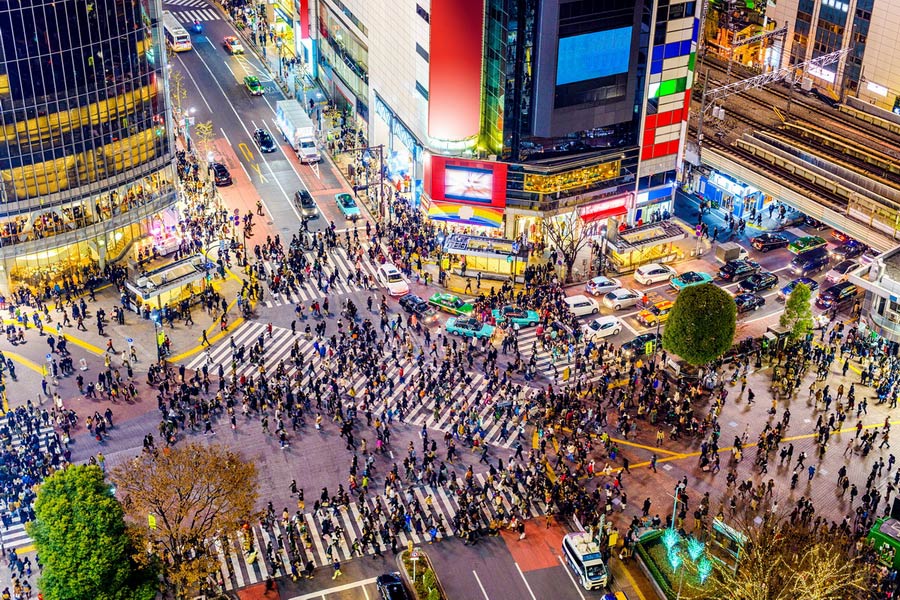
Holidays and Festivals in Japan
Each Year, Japan celebrates around 16 public holidays: New Year, Coming of Age Day, the Emperor’s Birthday, Vernal Equinox Day, Marine Day, SOP and Sports Day, Mountain Day, Respect of the Aged Day, Autumnal Equinox Day, Health and Sports Day, Culture Day, Labor Thanksgiving Day, including four holidays under the Golden Week. New Year, or Shogatsu is the biggest holiday in Japan.
Japan Festivals
Japan festivals (matsuri) are massive events in the country, and there are countless throughout the year to celebrate. If you visit one of Japan's cities or towns during a cultural fete, you can be sure to gain extra value out of your time here, enjoying unique experiences of local tradition. The joyful holiday emits unity. So, those with an adventurous spirit can fill their memories with color and joy.
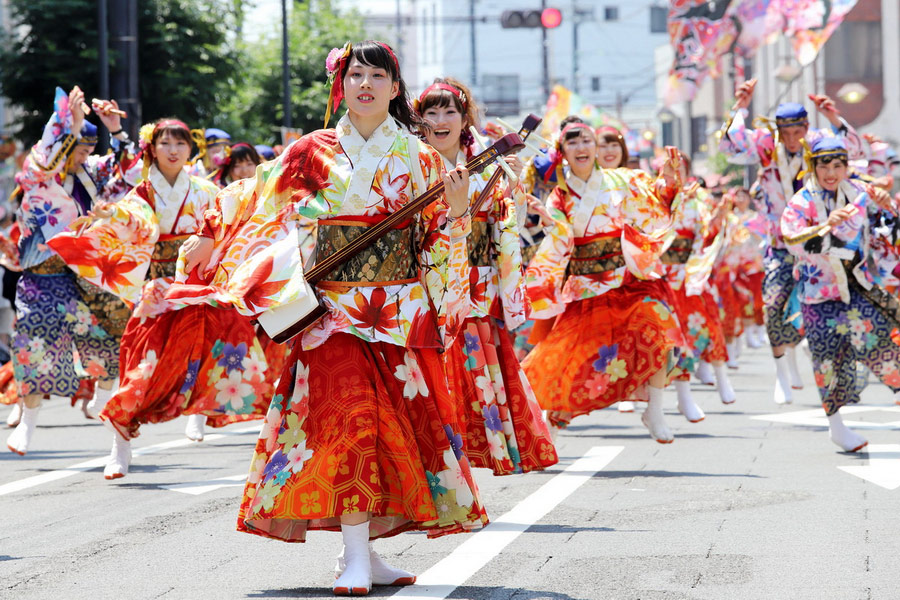
Here is a selection of the most important cultural festivals in Japan.
- Sapporo Snow Festival
When: At the beginning of February
Like most snow festivals in other countries, the Sapporo Snow Festival is an exhibition of massive snow and ice sculptures held in Odori Park. Every year, 2 million visitors attend the celebration. Local and international artists come together to build their masterpieces well-lit at night. - Omizutori
When: March 1-14
The Japanese “omizutory” refers to the final service in a two-week-long ceremony called Shuni-e. It takes place in the famous Todai-ji, Nara. The Omizutori rite focuses on water’s power to purify people of their sins and welcome spring. - Gion Matsuri
When: The entire July
The Gion Festival has a history of more than a thousand years, and it is a matsuri dedicated to the Yasaka Shrine in Kyoto. The various activities occur from July 1 to July 31. The biggest one featuring a parade with yamoboko or floats takes place on July 17. - Nebuta Matsuri
When: August 2-7
Nebuta Matsuri is so widespread that almost eight million people attend the festival in the city of Aomori annually. One of the best parts of the Nebuta Festival is that anyone can purchase or rent costumes to become a haneto – a festival dancer – as long as they follow the rules. - Awa Odori
When: August 12-15
Awa Odori is Tokushima’s traditional dance celebration with a history of over 400 years. Today, the matsuri is held throughout the country including Tokyo and Saitama. However, visitors can enjoy the grandeur of the event only in Tokushima. - Fuji Rock Festival
When: July
Fuji Rock Festival is among the well-known music festivals in Japan and the world. It has been celebrated over three days every July since 1997 in Naeba Ski Resort.
Each year, the event attracts around 150,000 people. For this reason, we recommend booking accommodation and festival tickets in advance.
The 2023 Fuji Rock Festival welcomed on its stage world-famous artists, such as Daniel Caesar, Alanis Morissette, Foo Fighters, Denzel Curry, Weezer, the Strokes, and a few more.
Dos and Don’ts in Japan
- Bow when greeting in Japan, and learn about the different kinds of bows appropriate for various situations.
- Take off your shoes when entering the house.
- Use cloth or paper towels to wipe your hands before a meal.
- Ask permission before taking a photo of Japanese people in a kimono.
- Line up before getting on the train.
- Avoid talking on the phone while riding public transportation.
- Apologize even if it isn’t your fault. “Sumimasen” is a word often used in Japan even when they haven’t done anything wrong.
- Say “itadakimasu" before eating and "gochisousama" after you finish the meal. The two phrases express gratitude towards food.
- Learn how to hold chopsticks when eating to show respect.
- Signal to a waiter or waitress in Japanese restaurants by gently raising your hand and saying "sumimasen" to catch their attention.
- Avoid being loud in public places such as parks, libraries, restaurants, and on roads.
- Don’t blow your nose in public.
- Don’t interrupt the conversation.
- Don’t be overly emotional.
- Avoid using hand towels to wipe your face, mouth, or the table as it's considered bad manners.
- Don’t hesitate to hold the bowl in your hand when having miso soup or rice.
- Don’t be afraid to make noises while eating soba, udon, or ramen. Slurping and sipping sounds are fine in Japan.
- Don’t leave leftovers after having lunch or dinner.
- Don’t follow Geisha or Maiko for selfies.
- Avoid leaving a tip or openly counting your change, as these practices are not common in Japan.
Food in Japan
The authentic Japanese food scene, renowned for its impressive variety, typically features rice, miso soup, and an array of side dishes. The country is divided into eight regions, encompassing a total of 47 prefectures, each boasting traditional dishes and unique flavors. For example, a must-try dish in Hokkaido is the Sea Urchin. Japanese ramen has become very popular worldwide, but it's only in Japan that tourists can explore the full spectrum of ramen varieties.
For the Japanese, eating is an indispensable part of human relationships. When they go out with their friends or business partners, the first thing they do is eat out. This is due to the custom of having a meal together with people within their circle.
So, when you are in the land of the Rising Sun, what kind of Japanese food should you taste? Here’s the list of the most popular meals to tackle into in Japan.
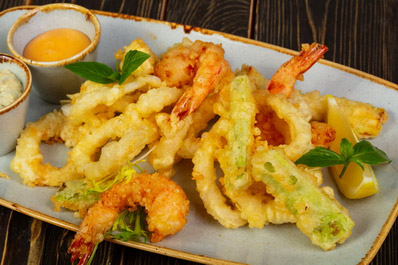
Tempura consists of lightly fried seafood or vegetables, often served with a savory dipping sauce, rice, and miso soup.
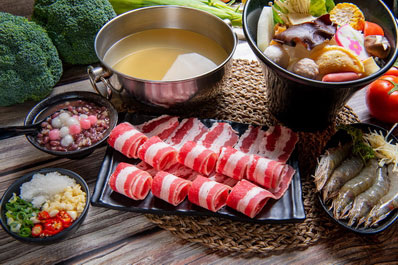
Shabu-Shabu offers diners the chance to cook thinly sliced beef and fresh vegetables in a hot pot right at their table.
Japanese Rice Wine – Sake

Japanese sake is neither wine nor beer, but something rather special, reflecting the elegance of Japanese culture. The legal definition of sake is “seishu” (clean sake), which refers to sake that has had the silt removed, leaving a clear drink. But, whatever you call it, sake is a great beverage, either warm or cold. Unlike other types of alcoholic drinks, it offers an entirely unique experience.
It will help to know about different types of sake before you travel to Japan.
Daiginjo and Junmai Daiginjo
Daiginjo is high-quality sake. Junmai Daiginjo is a type of Daiginjo sake made exclusively from rice, without any additives, embodying 'pure rice' sake. Hence, this pair is considered top-grade and the best sake to buy in Japan, requiring the best ingredients and precision during brewing.
Ginjo and Junmai Ginjo
Ginjo is another premium-class sake that uses rice polished to 60%, while Junmai Ginjo is an organic variant without additives. It is brewed with particular yeast and fermentation techniques to create a light, fruity, and floral taste, typically very aromatic.
Junmai
Junmai is made from rice, koji rice, and water, giving it an acute flavor of rice and koji. Junmai means that the polishing ratio of rice is 70%. As a result, sake has a rich, slightly sour, sweetish, and umami-like flavor.
Junmai offers a depth of flavor when served warm or at room temperature.
Honjozo
Honjozo sake is light and can be served cold and warm. Honjozo sake, which includes a small amount of distilled spirit unlike Junmai, is known for its light and aromatic taste.
Namazake
Most Japanese sake is pasteurized after brewing and before storage. But Namazake is unpasteurized, which means it requires storage in the refrigerator. If you are looking for a fruity and sweet drink, Namazake might be a good option.
Nigori
Nigori is more popular outside Japan. Nigori stands for "cloudy" in Japanese. Kurabito (a person who produces sake) filters sake through rough cloth; because of that, it has much rice sediment in the bottle. The flavor is typically sweet and creamy.
Futsushu
Futsushu, the non-premium sake made from table rice, accounts for about 80% of the sake market.
Essential Japanese Phrases for Traveling in Japan
Do you fear the Japanese won't understand your English? And for good reason! A few sources state that only 20%-30% of the Japanese speak some form of English. But forget about your worry. With this small vocabulary list, you should be able to travel in Japan confidently!
| Phrase | Japanese Spelling | Latin Script |
| Top 10 Phrases | ||
| Good afternoon | こんにちは | Konnichiwa |
| Sorry | すみません | Sumimasen |
| Where is...? | ...はどこですか。 | ...wa doko desuka? |
| How much is it? | これはいくらですか? | Kore wa ikura desuka? |
| Do you speak English? | 英語を話せますか? | Eigo wo hanase masuka? |
| Please, take me to... | ...に連れて行ってください。 | ...ni tsurete itte kudasai |
| Can I ask for your card, please? | 名刺をください | Meishi wo kudasai? |
| Does this train/bus go to...? | この電車/バスは...に行きますか? | Kono densha/bus wa... ni ikimasuka? |
| Could I have...? | ...をください。 | ...wo kudasai? |
| Thank you | ありがとうございます。 | Arigatou gozaimasu |
| Basics and Greetings | ||
| Good afternoon | こんにちは | Konnichiwa |
| Goodbye | さようなら | Sayounara |
| Good morning | おはようございます | Ohayou gozaimasu |
| Good evening | こんばんは | Konbanwa |
| Good night | おやすみ | Oyasumi |
| Yes | はい | Hai |
| No | いいえ | Iie |
| You are welcome | どういたしまして | Dou itashi mashite |
| Thank you in advance | よろしくお願いします | Yoroshiku onegai shimasu |
Did You Know That…
- When Prince Alfred, Duke of Edinburgh, visited Japan in 1869, he got a large Japanese-style dragon tattoo on his right arm.
- The oldest hotel in the world is in Japan. According to historical records, the Nishiyama Onsen Keiunkan in Ishikawa Prefecture opened in 705 AD. The same family has operated it for over 1,300 years.
- The first subway line in Tokyo, and all of Asia, was the Ginza Line, which opened in 1927.
- Shinjuku Station in Tokyo, Japan, is the busiest station in the world, with over 3.6 million people passing through daily.
- Baseball players of the Tokyo Yomiuri Giants cannot wear facial hair under contract.
- The longest wooden bridge in the world, listed by Guinness World Records, is the Horai Bridge in Shimada, Shizuoka Prefecture.
- Kagawa is the smallest prefecture in Japan. The largest prefecture is Hokkaido.
- Japan is the country where men get gifts of chocolate from women on Valentine’s Day.
- Japanese restaurants serve water and towels (oshibori) to clean hands before eating, and it’s free of charge.
- The Japanese workers often nap on the jobs and in public – they can get a little shuteye on benches or subway platforms.
- In the past, the Japanese women who painted their teeth black were considered beautiful. This tradition continued for over 1,000 years, and today, it is present in the Kabuki theater during the onnagata show – where male actors paint their teeth and shave their eyebrows.
- Wabi-sabi is a word that expresses Japan’s sense of aesthetics. It denotes the elegance of withered or old things.
- Hadaka Matsuri is a festival in Okayama, Japan, featuring thousands of nearly naked men wearing only fundoshi loincloths to secure a good year.
- The Japanese avoid the number 4 because they believe it is unlucky, as its pronunciation "shi" can also mean death.


